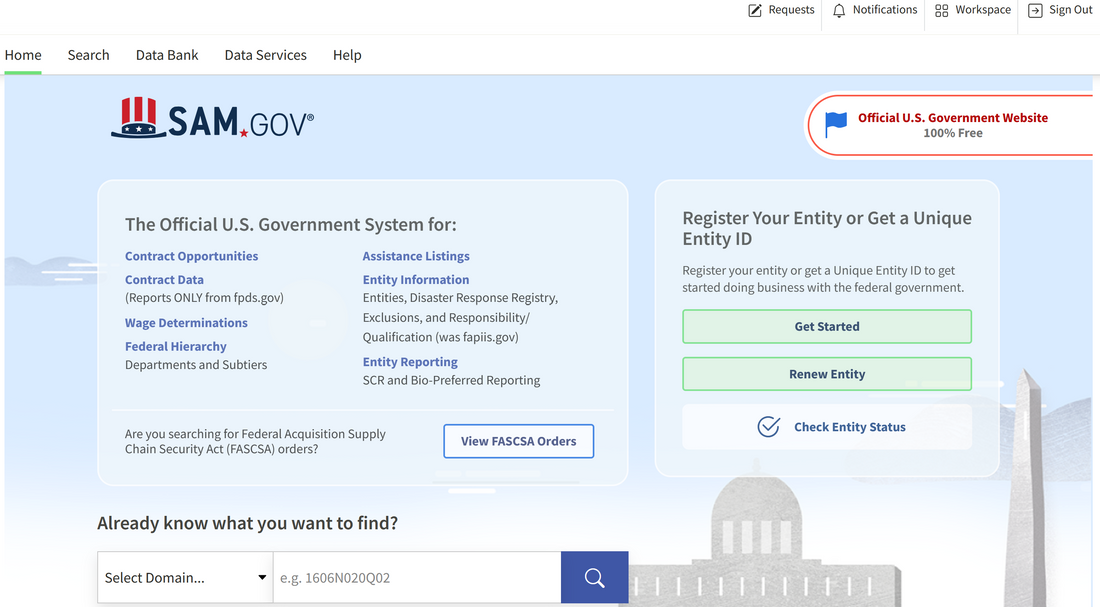Introduction: A Call to Action
The food revolution is here, and it’s more vital than ever. From urban agriculture to community gardens and small-scale farms, these grassroots movements are the backbone of sustainable food systems. But barriers like access to funding and navigating federal programs often stand in the way of their growth and impact.
To empower food activists and small farmers, understanding systems like DUNS and SAM.gov is crucial. These tools unlock the potential for grants, funding, and federal opportunities to help scale and sustain your vision. In this guide, we’ll demystify these systems and show how they’re key to creating transformative change in our food systems.
Section 1: What Are DUNS and SAM.gov?
DUNS (Data Universal Numbering System):
- A unique nine-digit identifier issued by Dun & Bradstreet.
- Historically used for federal contracts and grants to track businesses and organizations.
- Functions as your organization’s "business fingerprint," enabling recognition in both global and federal databases.
SAM.gov (System for Award Management):
- The U.S. government’s centralized platform for tracking entities engaged in federal contracts, grants, and programs.
- Required for eligibility to access federal funding, including agricultural grants and small business assistance.
- Acts as a gateway to government resources that support sustainability, food equity, and community-driven projects.
Section 2: The Transition from DUNS to UEI
In April 2022, the Unique Entity Identifier (UEI) replaced the DUNS system in federal programs, simplifying the registration process:
- What is the UEI? A 12-character identifier issued directly by SAM.gov during registration.
- Why it matters: No need for a third-party like Dun & Bradstreet—everything is managed in SAM.gov.
This change reduces red tape, making it easier for farmers and food entrepreneurs to access federal opportunities without navigating additional systems.
Section 3: Why This Matters for the Food Revolution
1. Access Federal Grants with Ease
Programs like the USDA Beginning Farmer and Rancher Development Program (BFRDP) and Farm to School grants require SAM.gov registration.
2. Opportunities for Small Farmers
Funding opportunities on SAM.gov specifically support small-scale agriculture, regenerative farming, and food equity initiatives.
3. Promote Food Justice
Secure resources to combat food deserts, amplify urban agriculture, and uplift marginalized farming communities. By navigating SAM.gov, you can access tools to bring fresh, sustainable food to more people.
Section 4: Step-by-Step Guide to Register on SAM.gov
Step 1: Prepare Your Information
- Gather your Taxpayer Identification Number (TIN) or Employer Identification Number (EIN).
- Define your business type and activities (e.g., NAICS codes for agriculture and food production).
Step 2: Register on SAM.gov
- Visit: SAM.gov.
- Create an Account: Follow the prompts to set up your profile.
- Entity Registration: Provide details about your farm, nonprofit, or business. You’ll automatically receive your UEI upon completion.
Step 3: Maintain Your Registration
- Renew your registration annually.
- Update your information as your business or farm evolves.
Section 5: Overcoming Common Challenges
1. Registration Delays
- Allow time for processing and verification, which may take up to several weeks.
- Use local Small Business Development Centers (SBDCs) or USDA representatives for guidance.
2. Understanding NAICS Codes
- NAICS codes classify your business for federal funding. For example:
- 111219: Other Vegetable (except Potato) and Melon Farming.
- 111339: Fruit and Tree Nut Combination Farming.
3. Technical Issues
- Use SAM.gov’s support or resources like the USDA’s New Farmer Help Desk for troubleshooting.
Section 6: Real-Life Success Stories
Detroit Urban Farms: Scaling Hydroponics
With funding from SAM.gov-listed grants, a small urban farm expanded hydroponic systems, providing fresh produce to underserved neighborhoods year-round.
Texas Community Gardens: Local Farm-to-Table Funding
A coalition of community gardens in Texas leveraged USDA funding to develop infrastructure for local markets and food distribution programs.
Section 7: Liberate the Food Revolution
DUNS and SAM.gov are more than bureaucratic steps—they are gateways to empowerment and growth for small farmers, urban gardeners, and food activists. By navigating these systems, you can secure the resources needed to scale your mission and bring fresh, sustainable food to more tables.
Actionable Next Steps:
- Begin your registration at SAM.gov.
- Explore federal funding opportunities like:
Call to Action
Are you ready to unleash the food revolution? Let’s turn paperwork into progress and cultivate thriving gardens, sustainable farms, and resilient communities together.
Join the Discussion: Share your SAM.gov registration story or challenges below, and let’s inspire others to take action!
#GrowLocal #UrbanFarming #FoodRevolution #SustainableFarming #USDAgran

